New York City March to End Fossil Fuels 2023
Written by: Chloe Yuqing Wang
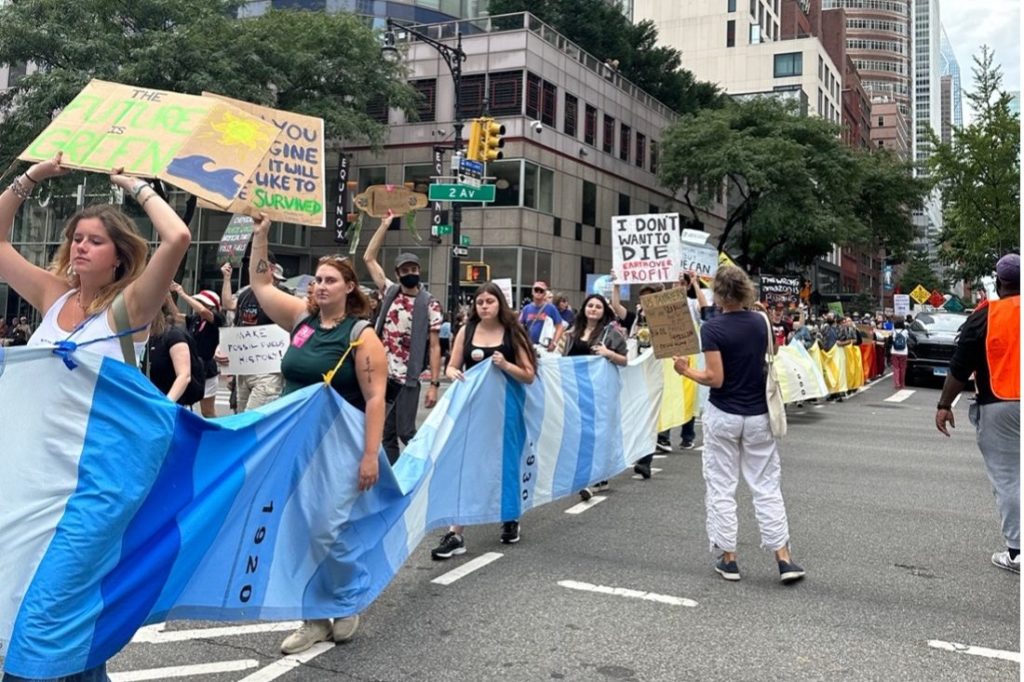
Chloe Yuqing Wang/Earth Shiners
On September 18th, 2023, about 75,000 people gathered on the streets of New York, demanding an end to fossil fuels. This day led to New York City Climate Week and the United Nations General Assembly from September 19th to 22nd. The march commenced from 58th Street near Central Park and ended on 1st Avenue and 51st Street. The total march distance was 1.3 miles, passing through the busy streets of New York City, such as 5th Avenue and Columbus Circle.
The march called on President Biden to act on climate change as he has the power and is in the position to change the course of human climate history. Specifically, the demands are 1. to stop federal approvals of fossil fuel projects; 2. to phase out drilling on public lands and waters; 3. to declare a climate emergency and promote projects that build climate resilience; 4. to ensure the transition to a green future is just with considerations that support workers’ and community rights, job security, and employment equity. The goal of this march is to exert pressure on President Biden to put climate as a priority within his legislative agenda.
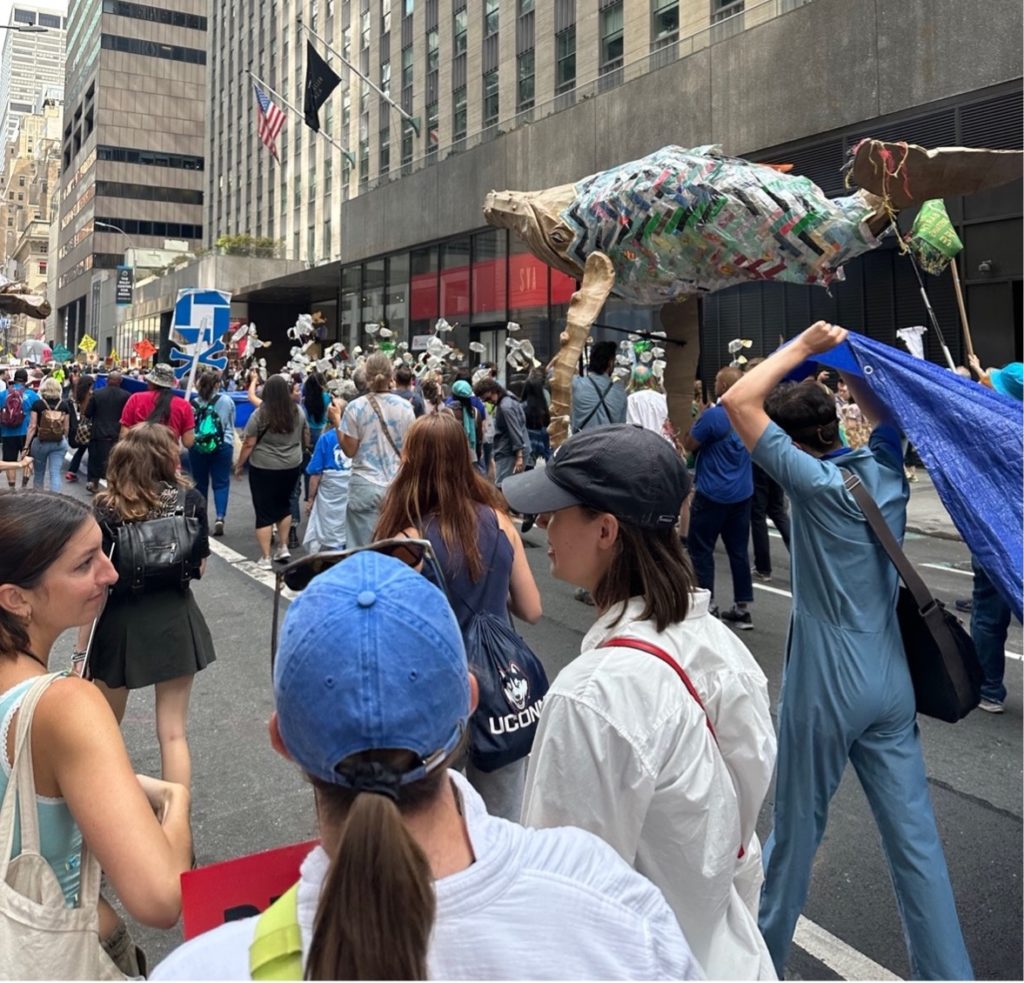
Chloe Yuqing Wang/Earth Shiners
In alignment with the march’s overarching theme, thousands of artworks in various forms were displayed, with signs and banners emerging as the most direct and impactful means of conveying ideas, beliefs, and the voices of the impassioned demonstrators. At the same time, people dressed up as polar bears; a group had sea turtles and a giant whale made from plastic bottles.
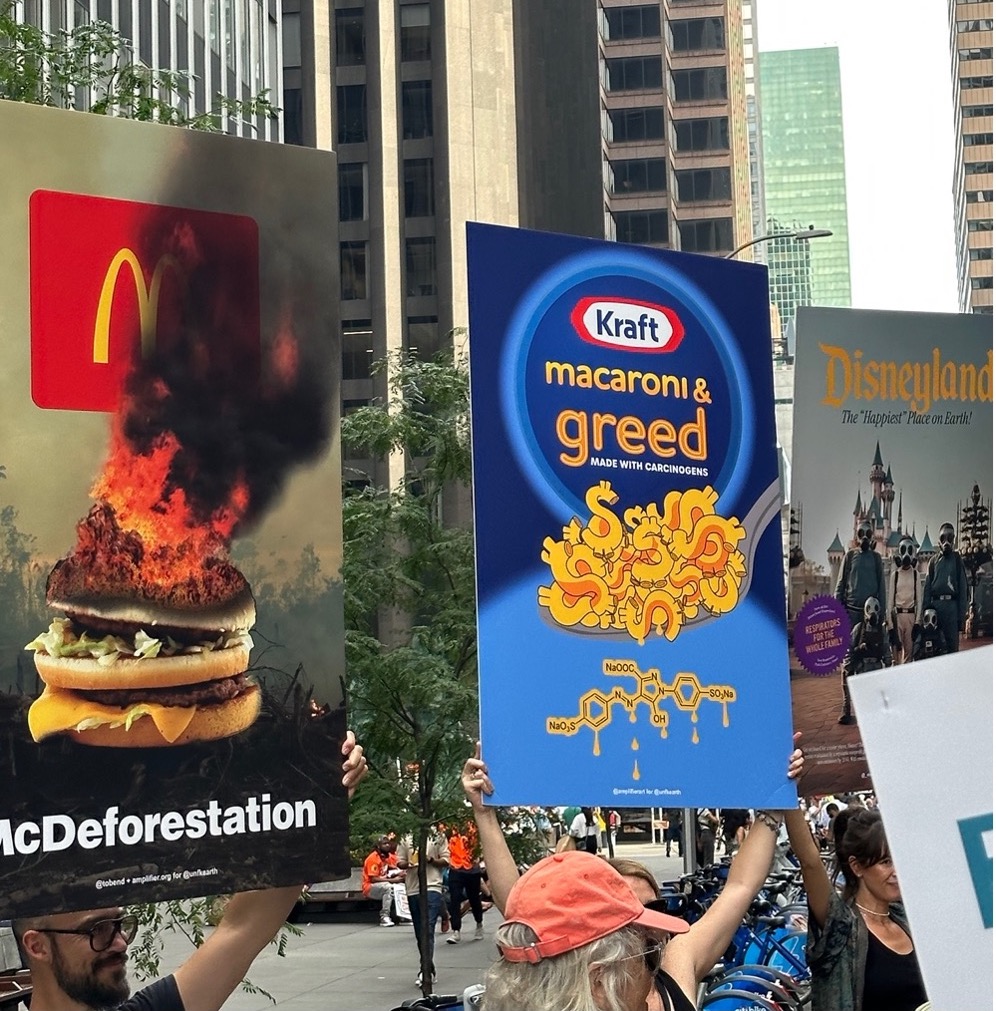
Chloe Yuqing Wang/Earth Shiners
The climate march allowed climate and environmental activists to showcase their artistic ability while voicing their frustration with the current neglect in domestic and international progress on combating climate change. The plethora of ideas and designs made the march a parade that ended as a block party with youth activists, artists, and speakers, and it was joined by Rep. Alexandria Ocasio-Cortez (D-N.Y.), who gave an inspirational and impassioned speech urging a faster transition from fossil fuel-based economy.
The climate march in New York City on Sunday was a powerful statement, a display of artistic prowess, and a call for immediate climate action that resonated with people worldwide as humanity grapples with the challenge of climate change.
African-American Day Parade Harlem
Global Citizen Festival
Written by: Rashawn Khamari Merchant
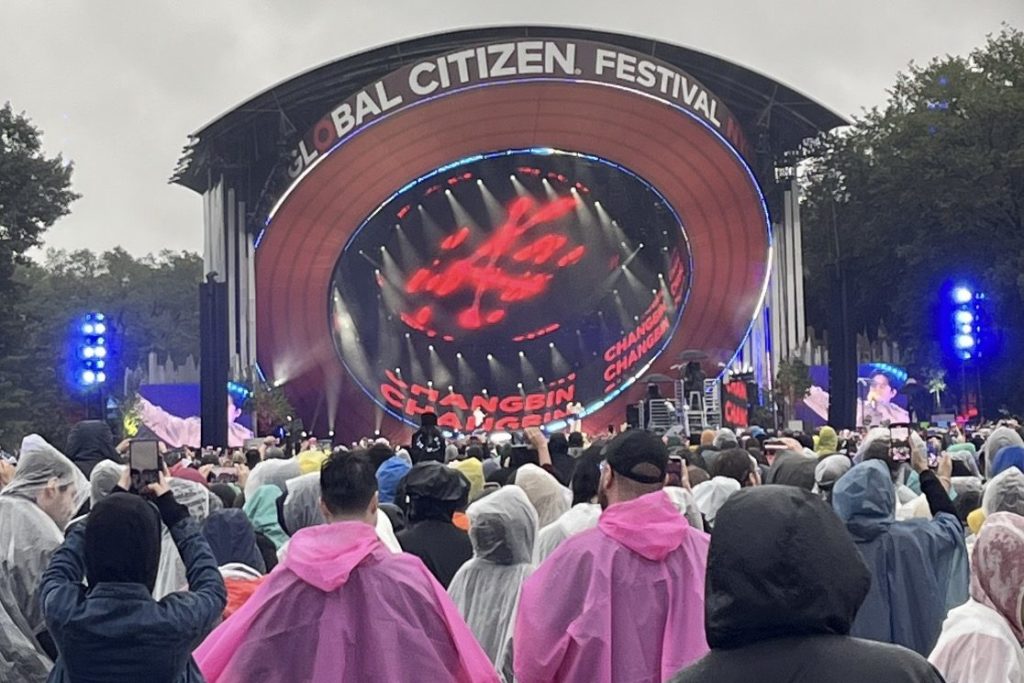
Rashawn Khamari Merchant/Earth Shiners
All weekend, I knew the rain was coming. I tried holding out as much as possible, but as long as I stood committed, I knew attending the Global Citizen Festival meant getting soaked. Who would’ve thought the end of Climate Week in NYC would finish off with the heaviest weather of the season? However, with my friends and fellow world savers, we had a blast attending this event dedicated to solving Earth’s issues.
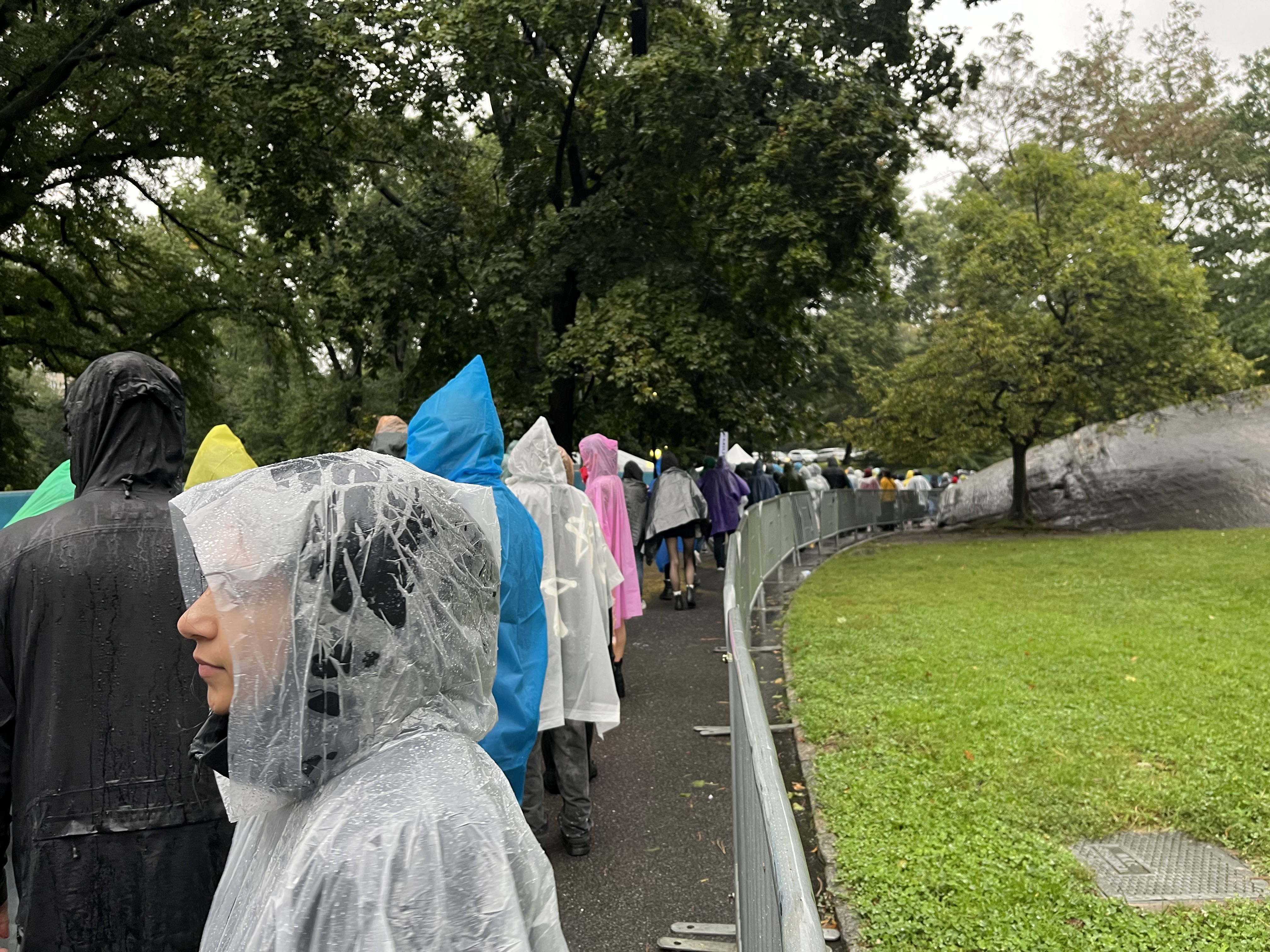
Rashawn Khamari Merchant/Earth Shiners
Every year, the Global Citizen Festival (GCF) is hosted in New York, right in the heart of Central Park. The festival has featured past performers such as Kendrick Lamar, Metallica, and Mariah Carey. This year, we were all drawn to see Lauryn Hill and the Red Hot Chili Peppers, even if it meant standing in a storm for 5 hours.
The overarching theme of GCF is to promote the current year’s sustainability goals. Influencers and world leaders who went on stage in between acts mentioned climate, world hunger, and poverty the most. Truthfully, my friends and I expressed a slight disconnect. As climate students, we’ve each experienced our fair share of blank words and performatism, which often doesn’t amount to action. I realized, however, that it is always better to stay positive. An event promoting a fight to get people fed is better than no event.
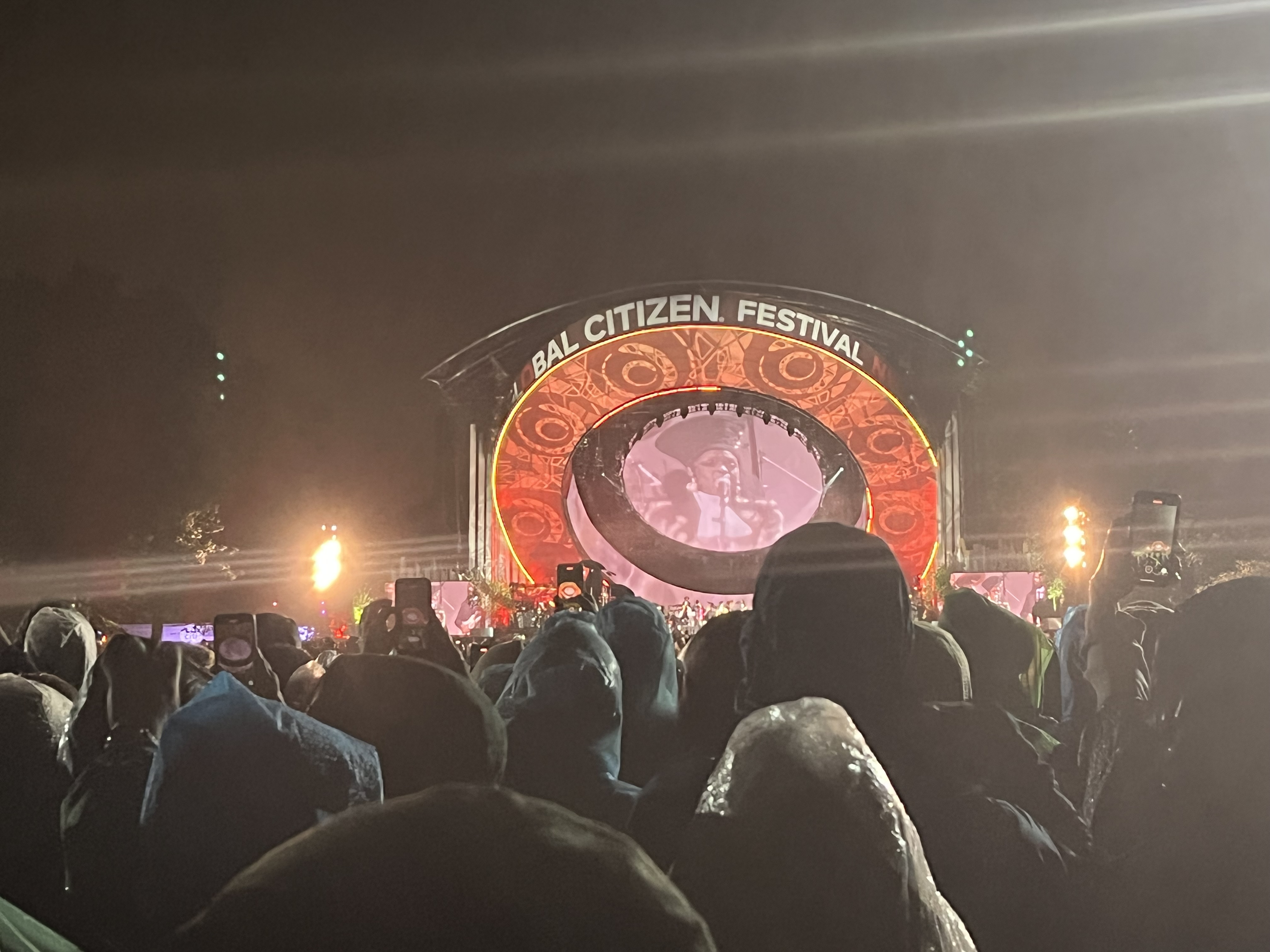
Rashawn Khamari Merchant/Earth Shiners
It’s essential to remember you can have a good time amongst all the bad. As Lauryn Hill celebrated the anniversary of Miseducation, I’m sure balance is what she wanted 25 years ago as well.
A Desire to Change
Tales from Switzerland
Written by: Rashawn Khamari Merchant
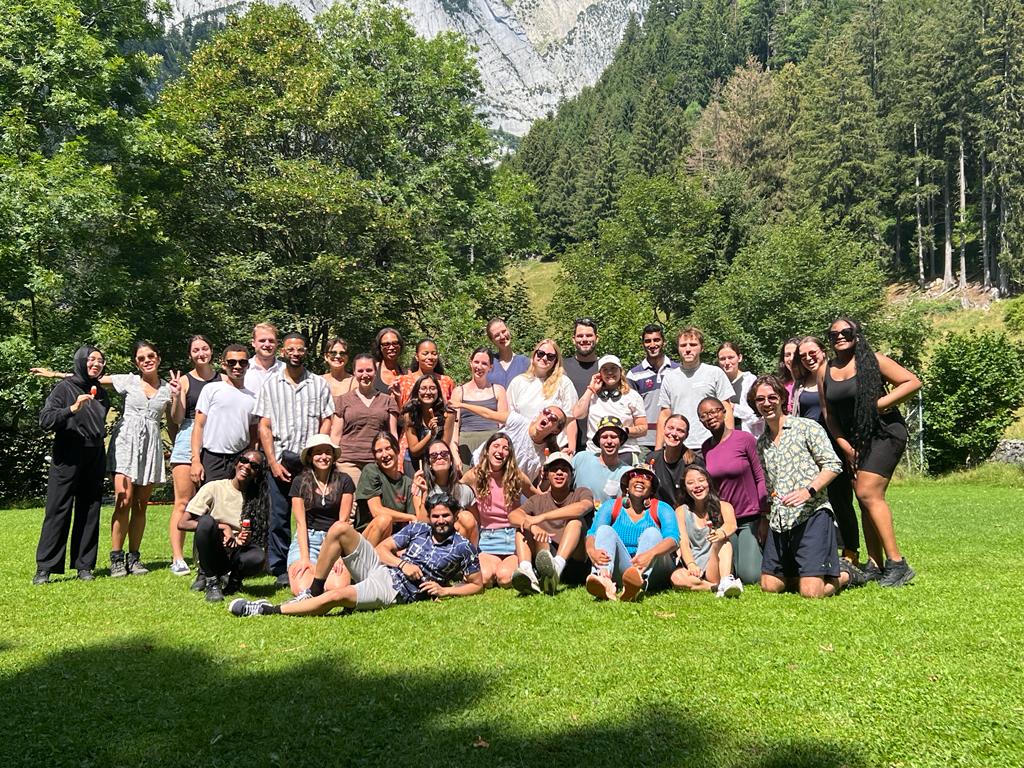
Thrive Impact Summer School
Change often comes to those who want it. This sentence describes the foundation for the Thrive Impact Summer School program. Students and faculty from around the world came together in St. Gallen, Switzerland, to embark on a journey to become changemakers and ignite a push for climate justice in our education, work, and surrounding communities. We all left with much more than we bargained for and experienced an amount of study that will last a lifetime.
As a graduate student finishing a master’s in Climate and Society at Columbia University, climate justice is an area in which I have always wanted to participate. With a family residing in Harlem, New York, the evidence of how a lack of resources can impact a neighborhood compared to adjacent ones became quite clear throughout my life. In addition, walking amongst the campuses in Morningside, I realized the power of education in uplifting your environment. Strong academics can provide you with the tools to better yourself and others, and those tools are what I would want to bring to the place where my family calls home.
Gratefully, I have learned plenty at Columbia, but I wanted to expand my knowledge of climate change and social issues on a global scale. I sought the trip to St. Gallen University to accomplish this goal. Upon arrival, I did not expect that so many students from Europe would be looking to study through the lens of someone familiar with environmental injustices.
In my personal experience living in America, change faces friction. From the civil rights era and beyond, societal shifts have faced antagonism in favor of traditional ways. In America, marginalized groups are accustomed to this way of living and have either accepted or learned how to adapt or maneuver around the pushback to make strides.
What I took away from being immersed with a group of students not as familiar with a heterogeneous society is that previous biases against how societal structures “should be” are not as much of an obstacle to deal with. I sat with students from Switzerland, Germany, Scotland, England, and France who were open to understanding how climate change affects people of color and lower-income differently than those with the advantages of whiteness and wealth.
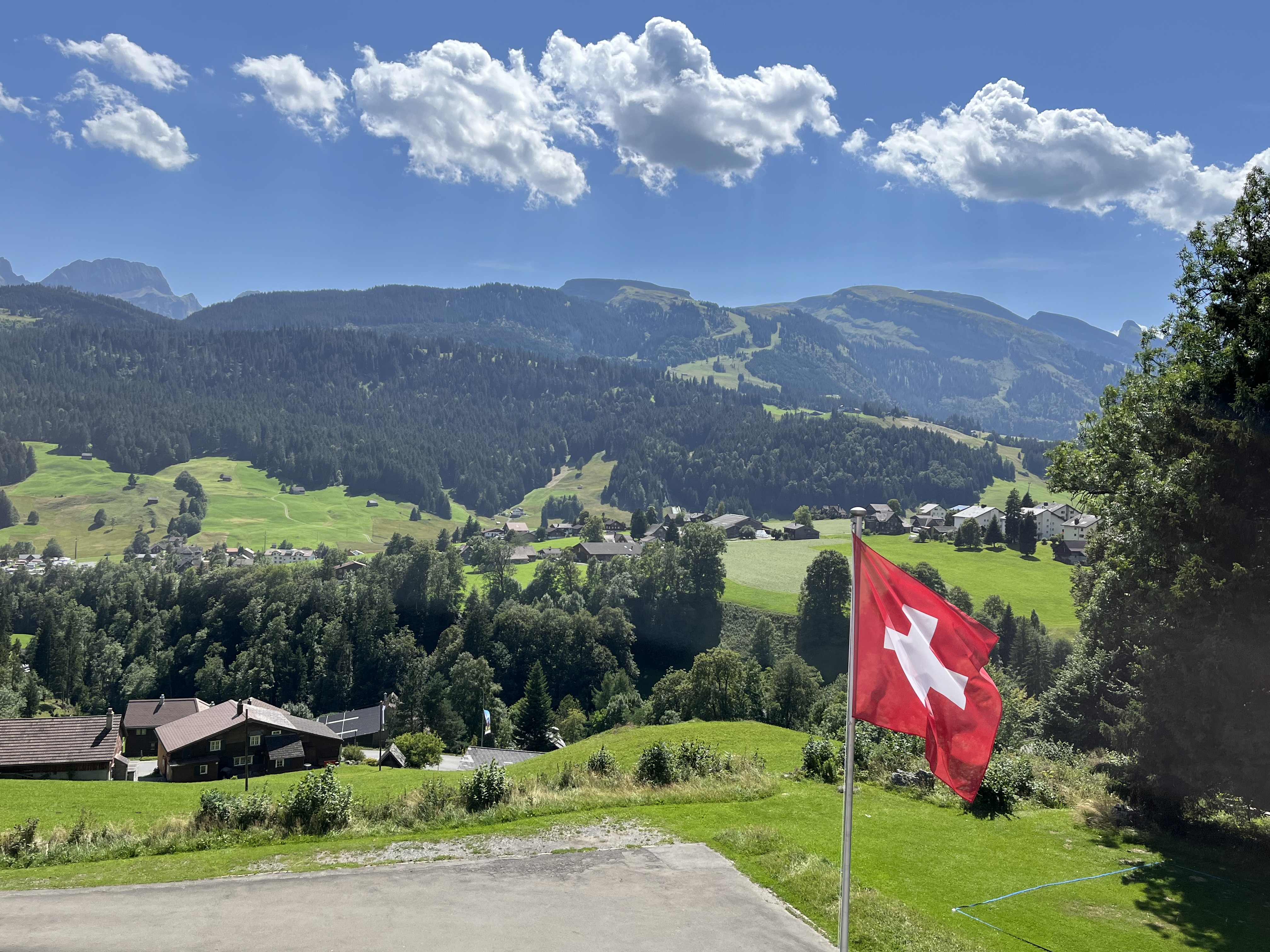
Rashawn Khamari Merchant/Earth Shiners Magazine
This difference is significant because to make sustainable changes, you must know what effects will occur on individual levels. The openness and willingness to understand these differences allowed us, as a group, to make tremendous progress. While I cannot say everything was smooth sailing without disagreements (we are human at the end of the day), it helped the group focus better on capstone assignments and task completion. I also appreciated the collaboration because I felt at ease enough to begin taking lessons on the ways of life in Switzerland and the surrounding countries.
The ability to focus on the abundance of trees and environmentally friendly ways of living made the trip entirely worthwhile. Never had I seen so much lush greenery in a place where people cohabitated with nature. While I did not feel like I had to fight my colleagues due to their expressed commitment to working together, I got to focus my attention elsewhere and gain my benefits from the trip.
Overall, it helps to be in a workspace where you feel supported, and others want to help you. Climate justice is brutal but made easier when you are with those who want to be with you.
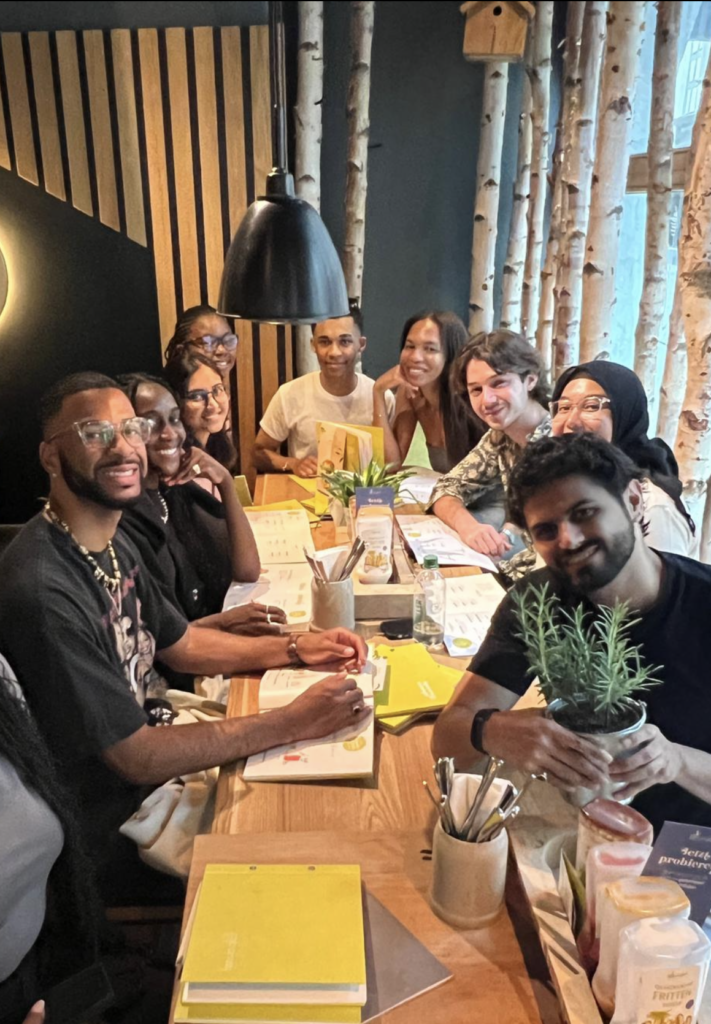
I encourage anyone to be where you are wanted, as it will bring you peace of mind and the strength to move forward.
Art and Climate Education
Written by: Joshua Nodiff
Many return to the classroom and begin another semester of school while hurricanes, heat waves, and coastal flooding threaten to disrupt their studies. For students to ameliorate their anxieties and envision a more regenerative future, teachers should incorporate the arts into environmental education.
The arts provide tools and techniques for students to imagine worlds beyond the climate crisis. Along with storytelling, the arts can paint a paradigm in which the root causes of the climate emergency — hierarchies of extraction and exploitation — are uprooted in favor of a transformative vision for the future. By dreaming of a more just and regenerative future, students can use the tools of art and storytelling as blueprints to build the world they want to inherit.
The arts can also be therapeutic tools for personal, interpersonal, and communal healing. The arts can mend ecological rifts and social systems by reimagining the inextricable relationships between all living communities. The arts can express and heal the emotional and psychic traumas ascribed to climate anxiety, grief, and despair. With bold and transformative visions of the future, the arts can uplift emotions of hope and inspiration into a movement for collective liberation.
The arts — combined with social-emotional learning, mindfulness education, and community engagement — are indispensable to climate pedagogy beyond the bounds of the classroom. You are never too old to dream as big as you can.
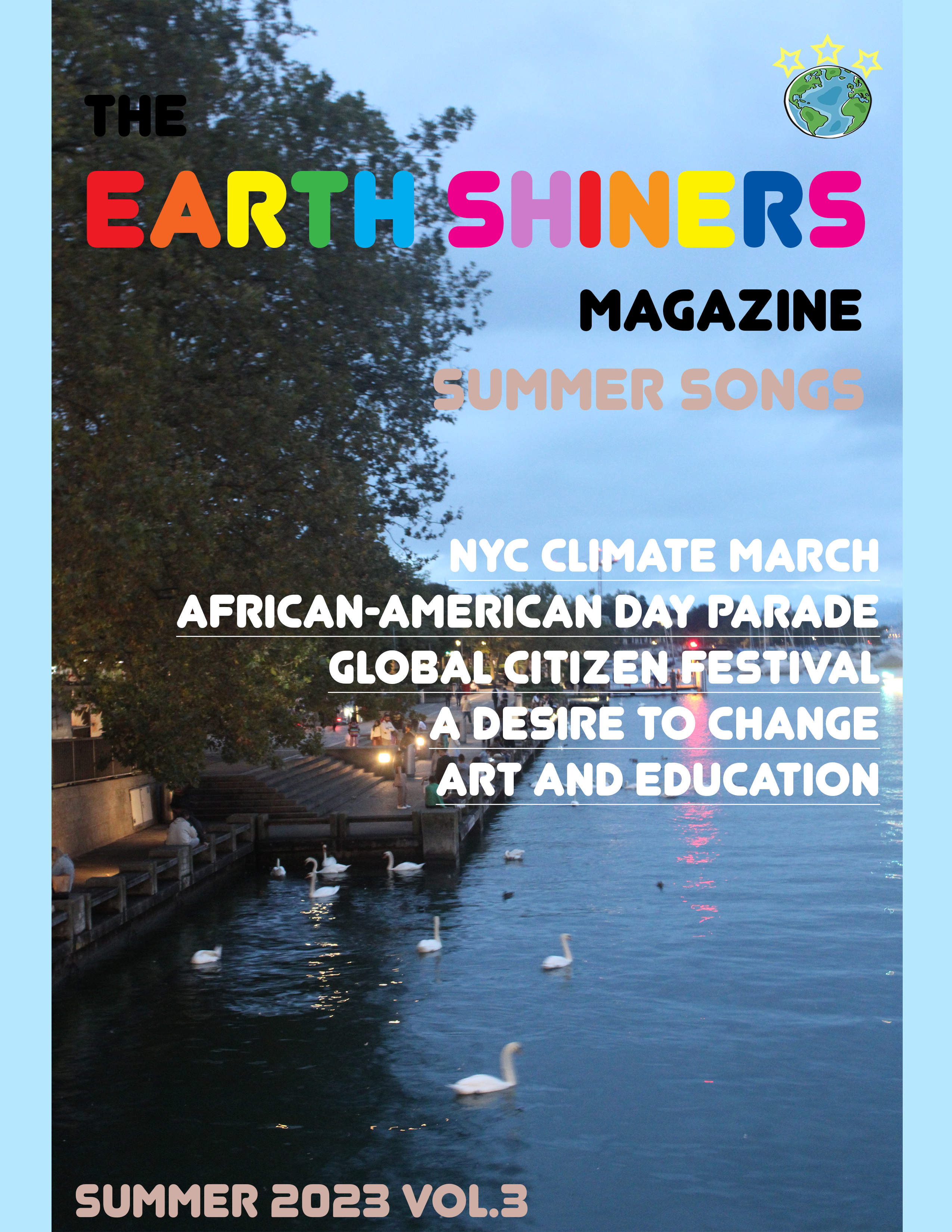
Leave a Reply